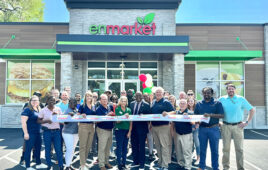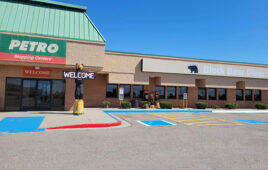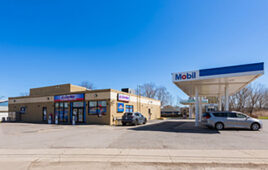![innovativeideas [80251]](https://cstoredecisions.com/wp-content/uploads/2016/06/innovativeideas-80251.jpg) By Bill Scott, President, StoreReport LLC
By Bill Scott, President, StoreReport LLC
“Innovation is not a big breakthrough invention every time. Innovation is a constant thing. But if you don’t have an innovative company, coming to work every day to find a better way, you don’t have a company. You’re getting ready to die on the vine.” -Jack Welch
We’ve all heard this famous quote before, but the truth is, it has never been more true than it is today. Read Jack Welch’s quote again. “Innovation” isn’t merely the creation of a new idea, device or method, and making it work; innovation is a lifestyle, a culture, a Mission Statement. It’s the first thought we have when we wake up in the morning, and the last thing before going to sleep. Innovation is more like breathing than it is an epiphany.
My favorite definition of the act of innovation is to take two unrelated ideas that have no known relationship and create a new idea, device or method to create a product and/or to solve a problem. This can be a thing, a process… to effect a cultural shift.
My favorite example is E.J. Cossman’s spud gun. Together a potato and a gun became a child’s toy that sold two million products in six months. The act of combining two unrelated ideas and coming up with a third is easy if you turn it into a habit. Anytime a problem surfaces, innovative thinking will provide a solution. But first, you must put yourself in that frame of mind. Problem, Innovation, Solution… it’s as simple as that.
However, creating a device like Cossman’s spud gun is only one example of innovation. Others successful examples combine restaurants and airports, MRI scans and entertainment, automotive and gaming, McDonald’s and Forumla 1, boats with houses, baby carriages and landing gears, vacuum cleaning and sawmills, eggs and wine, lights and services, telcom and toys, transport and nature, phone booths and solar, fashion and navigation, automotive and equipment.. the list goes on and on.
Creating an innovative mind involves nothing more than imagination and practice. Ideas can be simple like coffee and gas stations, food and gasoline, travel and fast food… all of these are simple examples of innovative things that turned gas stations into a $195 billion convenience store industry.
Learning to think like an innovator is a requirement if you want to become a leader in your chosen industry. Knowledge through research helps you decide if the market is there. In the Year 2000, I envisioned of POS systems and the Internet. The idea of joining two disparate systems into one allowed me to imagine suppliers peering onto store shelves to determine inventory replenishment, price books that could be managed globally, not just within a company’s stores but over vast expanses of territory. I imagined promotions planned and executed in real time, advertised over large screen televisions, inside the stores, on demand. That led to the possibility of real-time monitoring within stores, which led me to consider the prevention of robberies, the lowering of insurance cost, better customer service, defeating shoplifting and shrink. As a results we have made great progress toward providing all of these ideas today.
Innovation is similar to magic. Once you get into the innovative state of mind, many things you have never imagined can become the latest rage overnight. Just as magicians put themselves under pressure to reinvent their performances, convenience stores and other retailers must constantly strive to reinvent retail through innovation. Just as magicians constantly amaze their audiences, retailers must constantly amaze their customers, and there is no greater example than Walmart’s program of juggling prices in their stores to create the illusion of bargains.
Recently, I posted the results of a promotion involving Little Debbie Honey Buns. By lowering the retail price of honey buns by a mere $0.06, and then marketing them in pairs, the sales of Honey Buns almost tripled in the first two days of the sale, and continued to sell at that rate through the duration of the sale. I was amazed when the promotion ended and another was not immediately created to take its place.
If we can do this with one product, why not two? Why not a dozen? Why not everything in the store? The proof is in the statistics. Consumers do respond favorably to sales, and it doesn’t cost that much to see those kinds of results, that is, if you have the environment to make it possible.
The problem is retailers have become prisoners of their chosen technology, and they are afraid to look outside of their technology because change can be frightening, and fright leads to stagnation, and stagnation promotes failure. Being able to download sales and review product performance is a good thing, but it fails in giving retailers the real-time information needed to be proactive in their thinking, and in their actions.
Reacting to past events has become a common flaw in management. The question should be not why we failed. Failure is a result of not planning ahead, and not having the tools to manage change. Once the proper tools are in place, failure only comes when we misuse them.
By and large, convenience retailers are rarely innovative in their thinking. They are more interested in what someone else did that made them successful. The problem is the value of past successes are old hat. Following the herd is almost always a dead end journey. We must be proactive instead of reactive, and look for new places to get our advice.
Imitation is never a safe bet. Real progress only occurs when an innovative mind combines with an entrepreneurial spirit and blazes new trails into more promising horizon.




